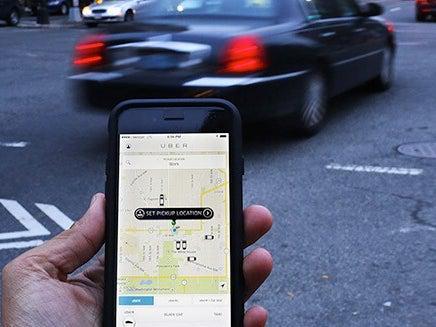

Tracey Smith asks the Gig Doctor: Do you think that HRIS vendors will be adding contingent worker capability to their products to allow companies to more easily track their entire workforce (employees + temps + freelancers)? Most currently track employees and temps but the freelancer/gig portion is missing, and the onboarding of freelance talent is awfully slow. The purpose of the contingent side of the workforce is to be able to flex the size of the workforce up or down quickly in response to business needs.
Gig Doctor: Good question Tracey. According to Andrew Karpie @ "Spend Matters", some CHRO are waking up to the need for an integrated VMS to capture all costs associated with labor spend. Enterprise SaaS providers like SAP are either acquiring VMS providers like FieldGlass or attempting to add the capabilities internally. Because the economy has rebound so quickly and recruiting methods are many and more successful, many CHROs are still holding out to find the needle in the haystack for an exact match of talent companies require which delays acceptance of the independent worker market and value. Thus, impacting the perceived need for measurement tools like VMS to be acquired, integrated, and made available for analytical use. This is a short answer to a perplexing issue for both freelancers and users of temp, freelancers, and independents. For more information, read the articles below.


"Hey Doc, give us the rundown on the current trend and status of gig work in America given the current pandemic."
The catastrophe caused by COVID-19, a China-sourced virus, is still with us. No one knows when we may have an effective vaccine -- if ever. Scientists have been working on a vaccine for AIDS for 35 years. New therapeutics, better hygiene, testing, and social distancing behaviors have helped to dramatically reduce the transmission of the virus and fatalities from this pandemic, allowing some businesses to return to a semblance of normal operations.
"Normal" in this instance, means millions of office workers who have been working remotely and tethered to their corporate servers via the Internet can continue to do so. Many businesses have discovered what many of us have known for years -- productivity has increased from those forced to work remotely. That revelation will put pressure on enterprises to reduce their owned or leased real estate, thus immediately reducing the cost of real estate (hard dollars) from their books. The downside, we know that working from home or hotspot has many disadvantages over the long haul for those with disruptions in their home/work environment or the effects of no human contact or person-to-person interactions. Working online remotely permanently, though cost-effective, and more desirable now, is not for everyone.
We've Come a Long Way Baby
As we look back at the origin of "gigs," which is the basic unit of the Gig Economy, we can gain insight into how this phenomenon developed. Working as an independent data communications network consultant in Colorado in the late 90s, an IT director for a federal government agency asked me what type of "gigs" I did? To be honest, I wasn't quite sure what he was asking. After some clarification, I got it. Not employed by anyone, unattached to any long-term contract or staffing agency, and I was fulfilling one project/contract at a time using only my acquired skills and knowledge. Sometimes known as a one-person shop, I was engaging in the form of work as a means of making a living. I had used my learned skills in IT to survive economic downturns.
This informal gig market has emerged as a component of our economy, which generates over $1 trillion in annual revenues from over 40 million Americans working as independents or freelancers (see DATA POINTS below).
Unlike young Uber drivers today, many gigs were engaged in the entertainment business - actors, dancers, singers, musicians, stage, and property handlers, etc., have always known the meaning of having a gig or not having a gig. Mostly in the creative art fields, a "gig" is the essence of having a job or project or not. It is how to support ourselves and our families. Many like the flexibility of work on their terms, but know the risks of being without a "gig" -- no unemployment benefits, usually no social security contributions and taking time to market one's self to obtain the next gig . . . or find a regular job. Many have opted for the independent work style, but more are now realizing that "gigs" may be the only available alternative for the skills they can provide down the road.
Available advanced skills of human capital continue to shrink dramatically as more of the baby boomer generation leaves the permanent workforce. A flood of innovative technologies has increased the ability of employers to automate increased processes. The causal disruption creates fewer and fewer jobs for the average working person -- unlike upheavals from the 19th century. More people are doing their work in an arrangement other than the traditional roles of the employee-employer model. A move to a different kind of work relationship has profound implications for every aspect of life and family. Stress and fear can add a new dimension to "work" when healthcare and retirement benefits are up to the independent contractor to provide for him/herself and family.
I have been consulting as a freelancer and entrepreneur off and on for 30 years. I have lived through this tectonic shift in which companies are now more interested in finding the best person with the new skills they require for the job than just the best person they can find nearby.
Employers also no longer want to absorb the cost of "bench strength." Having a Babe Ruth or Jim Brown sitting on the bench waiting for their talent to used is no longer good business practice. We have a world of work that is far less constrained by geography and language. As more soft skills task jobs become automated, we have a growing population unable to obtain the education and skills needed to find life sustainable, full-time employment. And, many retiring baby boom generation retirees (a population equal to the 19th nation on this planet) are seeking ways to supplement they are a shaky retirement income. Many will seek gigs available in the Gig Economy if they have a talent that is in demand—thus expanding the Gig Economy talent pool.
To gain more insight, read my primer about how the retiring baby boom generation will impact the workforce. BOOMERVILLE: Getting off the Corporate Merry-Go-Round found on Amazon.
According to a report from Thumbtack, an online marketplace connecting people to local services providers, the current gig economy is not sustainable. It will no longer exist in 20 years, as its focus is on low-skilled positions that can only serve supplemental income for workers and will likely become automated over time. You can already order food online, and many fast-food chains will follow McDonald's lead, installing touch screens to order your food instead of a real person.
What will be around at the end of those two decades is genuinely skilled professionals that can offer specific services as well as performance-based marketplaces that can connect people to these highly skilled independent workers, according to Thumbtack.
DATA POINTS: MBO Partners "State of Independence Report" is the industry's longest-running comprehensive study of the American independent workforce initiated in 2010. By their data collection and analysis, the total number of self-employed (independent) American's age 21 and up has risen to 40.9 Million in 2017, up 2.8% over 2016. Sixteen millions of those say they are full-time independents working at least 15 hours a week and an average of 35 hrs. per week.
Nearly 12 million persons describe themselves as part-time independents working less than 15 hours weekly and an average of 11 hours per week. Almost 13 million describe themselves as occasional independents. Other demographic data indicate that 53% are men, and 47% are women. Of the 40.9 million independents, generationally 38% are Millennials, 27% Gen Xers, 35% are from the baby boom, and traditional cohorts. The shocking number is that they produced $1.2 trillion of the USA economy or 6% of GDP in 2016. Reading the study results from 2018 versus 2017 may see some trend lines change a bit.
Regardless of how the Gig Economy is described or developed, it is clear something is going on beyond the buzzwords, something that is beginning to matter to all facets of work/life in America. Looking ahead beyond the pandemic to the Gig Economy 4.0, some of the facts are noticeably clear. The continued . . .
Got a question about working in the Gig Economy or how one can succeed as a freelancer, use the contact form to send me your question, concern, or comment.







